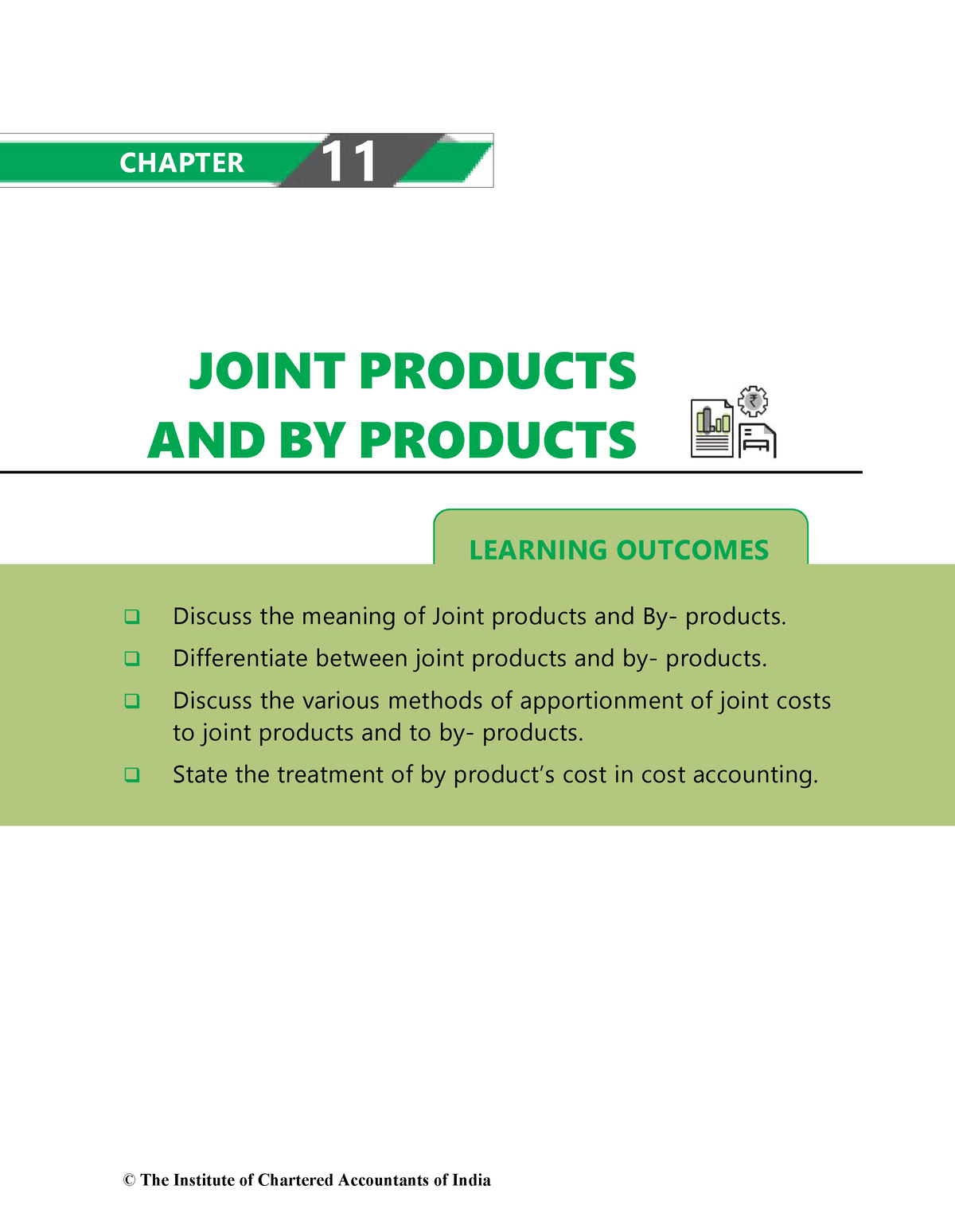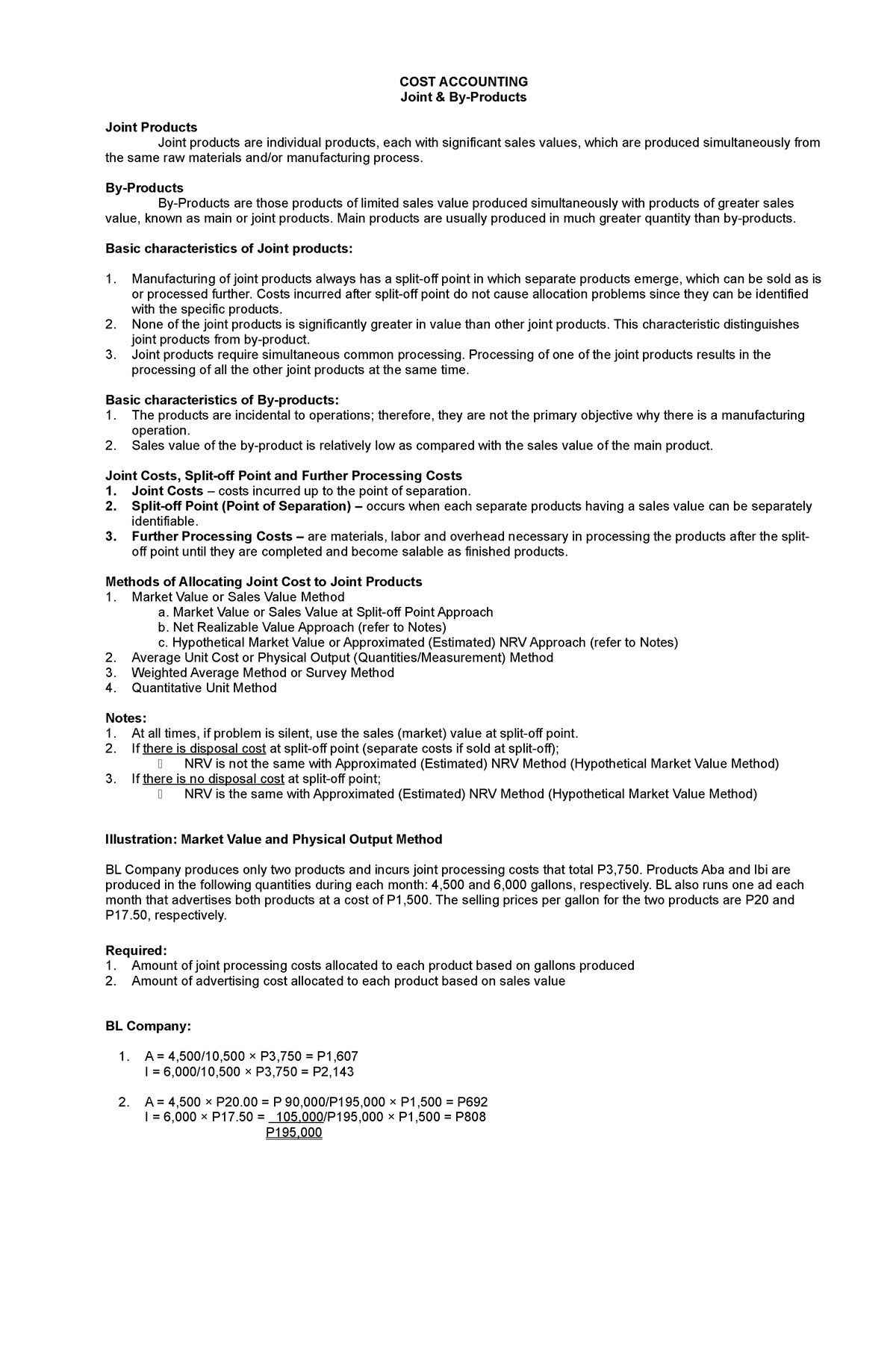
Joint products are the products that are produced as a result of a single production process. These products are produced as a result of the joint cost incurred by the company. Joint products are two or more products that are generated within a single production process. They can’t be produced separately and will incur undifferentiated joint costs.
Examples of the joint cost allocation based on the gross profit margin
Joint product costing constitutes the cost that arises from the common processing or manufacturing of products produced from a common raw material. The joint cost should not be confused with the common cost because they are significantly different from each other. For example, the costs related to power and fuel may be allocated among products on the basis of metered usage or production volume of each individual product. These methods of cost allocation include allocation based on the gross margins and the allocation based on the sales values of the joint products. The simplest way of doing this is by allocating a fixed percentage to each unit (e.g., 1% Of joint costs per unit).
Joint Product Costing
The joint products are separated from each other once the split-off point is reached in the run of a process. Therefore, the way to allocate the joint cost is based on the respective market values of the items produced. On the other hand, joint products can only be produced together, so adjusting levels of production for a joint product will affect production for the other product. Co-products can be produced in different quantities without affecting the production of other co-products. Co-products may require a different type of raw material and may be processed in different ways, but they’ll use the same facilities.
Joint Cost Allocation Methods FAQs
It ensures that costs are appropriately allocated and that accurate financial statements are produced. To ensure compliance with accounting standards, the cost accountant must ensure that the chosen allocation method is disclosed in the financial statements and is consistent with GAAP. The financial statements must accurately reflect the costs incurred in producing joint and by-products and comply with accounting standards. To illustrate this concept, let’s consider the example of a lumber mill that produces two joint products, hardwood and softwood, from a common set of raw materials, such as logs. The mill also produces a by-product, wood chips, which are generated during the milling process. In manufacturing, joint products are two or more products that are produced from a common set of raw materials or resources.
Quantitative Method
Joint product pricing is crucial for companies involved in multi-product production processes because it affects both profitability and competitive strategy. Efficiently allocating costs and setting prices for each product ensures nonprofit statement of activities explained mip fund accounting that no revenue potential is wasted, and each product contributes optimally to the overall profitability of the operation. The total production cost of multiple products involves both the joint cost and individual product costs.

Sales Value Method
The wastage is the minority output that is lost during the production process. The company usually ignores the wastage and excludes it from the consideration. If a company decides to allocate a higher proportion of joint costs to one product, it may need to increase its price to maintain profitability, affecting consumer demand and market dynamics. Conversely, if a byproduct becomes more profitable, a company may choose to allocate more costs to it, potentially lowering the price of the main product to consumers. The costs incurred in the production of joint products are undifferentiated until the specific split-off point.
Prior to the split-off point, costs can only be allocated to the joint products. In summary, choosing an allocation method is an important aspect of cost accounting for companies that produce joint and by-products. Cost accountants must choose a method that accurately reflects the resources used and the value of the products produced, is consistent with accounting principles, and meets regulatory requirements. The sales value at the split-off method allocates joint costs based on the relative sales value of each joint product at the point where they are separated from each other in the production process. This method assumes that the relative sales value of each joint product reflects the relative value of the resources used in their production. Joint product pricing involves setting prices for products that are produced together in a single production process but can be sold separately.
- The cost can be allocated for the joint products after the split-off point has been achieved.
- The company usually ignores the wastage and excludes it from the consideration.
- For information pertaining to the registration status of 11 Financial, please contact the state securities regulators for those states in which 11 Financial maintains a registration filing.
Our mission is to empower readers with the most factual and reliable financial information possible to help them make informed decisions for their individual needs. Finance Strategists is a leading financial education organization that connects people with financial professionals, priding itself on providing accurate and reliable financial information to millions of readers each year. At Finance Strategists, we partner with financial experts to ensure the accuracy of our financial content. The articles and research support materials available on this site are educational and are not intended to be investment or tax advice. All such information is provided solely for convenience purposes only and all users thereof should be guided accordingly. For information pertaining to the registration status of 11 Financial, please contact the state securities regulators for those states in which 11 Financial maintains a registration filing.